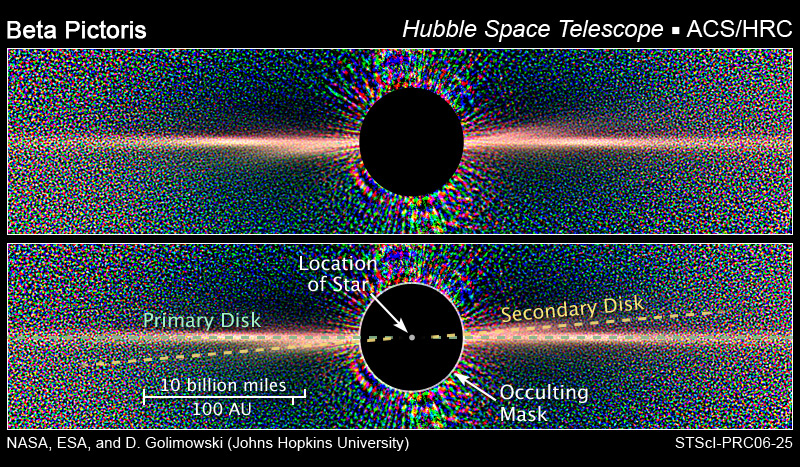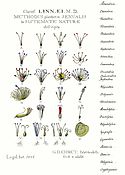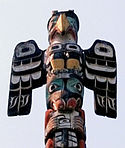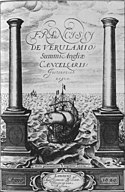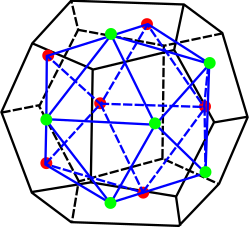HST betaPictoris comb
Hubble Sees Two Dust Disks Around Beta Pictoris
This Hubble Space Telescope view of Beta Pictoris clearly shows a primary dust disk and a much fainter secondary dust disk. The secondary disk extends at least 24 billion miles from the star and is tilted roughly 4 to 5 degrees from the primary disk. The secondary disk is circumstantial evidence for the existence of a planet in a similarly inclined orbit. The planet may have indirectly formed the secondary disk by sweeping up smaller planetesimals – chunks of rock and/or ice – from the main disk. The planetesimals then collide, producing the dust seen in the disk. The image, taken with the Advanced Camera for Surveys (ACS), is the sharpest visible-light view of the disks around Beta Pictoris.
Astronomers used the Advanced Camera's coronagraph to block out the light from the bright star. The black circle in the center of the image marks the coronagraphic mask. The colorful spike-like features and the speckled background are artifacts of the image processing which removed the residual starlight. The color image reveals that the disk is slightly red. The disk appeared gray in previous images taken by ground-based telescopes. Though astronomers are not sure why the disk is red, they think it is due to compact or fluffy grains of graphite and silicates, which may be as small as smoke particles.
The image was taken Oct. 1, 2003.Relevante Bilder
Relevante Artikel
Beta PictorisBeta Pictoris ist der zweithellste Stern im Sternbild Maler. Der massereiche, heiße Stern befindet sich in einer Entfernung von etwa 63 Lichtjahren und spielt in der Geschichte der Astronomie eine bedeutende Rolle. Der Stern ist Mitglied und Namensgeber des β-Pictoris-Bewegungshaufens. In seinem Orbit wurde per direkter Beobachtung im Jahre 2008 ein Exoplanet entdeckt. .. weiterlesen
TrümmerscheibeTrümmerscheiben sind Staubscheiben um ältere Sterne. .. weiterlesen
NaturtheorieEine Naturtheorie ist eine Theorie zur Beschreibung und Erklärung der äußeren, nicht von Menschen gemachten Wirklichkeit. Sie versucht, interdisziplinär Aussagen über natürliche Phänomene auf wenige Grundprinzipien zurückzuführen oder die Gültigkeit eines oder mehrerer durch Forschung oder Beobachtung entdeckter bzw. hypothetisch unterstellter Grundprinzipien in den verschiedenen natürlichen Phänomenen nachzuweisen. .. weiterlesen
